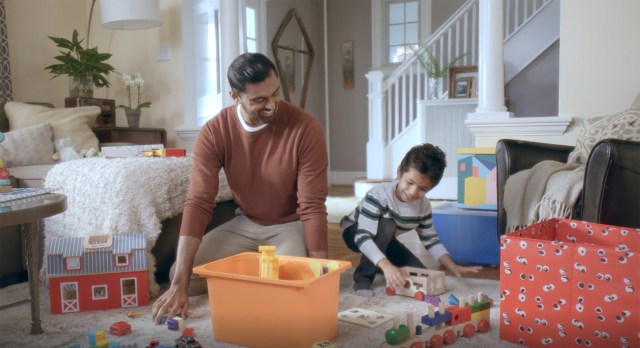With the unexpected school closings brought on by the COVID-19 pandemic, many parents found themselves in the unfamiliar role of serving as teachers for at-home schooling. Many of us discovered quickly that being an effective teacher goes well beyond simple instruction. It requires developing a plan that prepares you and your child to use time wisely which is adapted to the child’s interests and learning style.
That’s no small task. Lesson planning helps to keep the instruction focused on the child’s educational and developmental needs. With the possibility that we’ll find ourselves repeating this teaching scenario again during the new school year, the education team at Kiddie Academy has provided parents of preschoolers with tips and resources to help prepare at-home lesson plans.
Create a Schedule
Plan realistic chunks of time for lessons. At the beginning, depending on your child’s age, plan for no more than 5-to-10-minute lessons. As your child grows and shows they are able, consider extending that time to 15 minutes. Also, be sure to always alternate quieter lessons with more physical activities and provide breaks for the children to play and choose their own activity. And most importantly, remember to be flexible to changes in the schedule. There will be days when things don’t go as planned.
Specifically, if you are planning a whole day of learning (similar to a preschool day):
- Create a set schedule for each day. Children thrive on consistency and routines.
- Preplan blocks of time throughout the day. For example, start each day with a high-energy activity to practice motor skills and to release some of your child’s energy. Then, plan to have a quiet language-related lesson, followed by a music and movement activity, and then a snack. After the snack, provide time for your child to play. While they are playing, plan to engage with them by working on a math-related activity. Playtime would then be followed by lunch, a quiet story time, and then perhaps a nap.
- Create a visual schedule of the day. By creating pictures of each part of the schedule, your child will learn what to expect and understand and follow the routine easier.
However, if you’re planning lessons at various times throughout the day (rather than planning for a full day):
- Always plan some type of physical activity prior to each quiet lesson to help your child expel some energy and be ready to focus.
- Schedule lessons around the same time each day and provide your child with signals that will let them know that lesson time will begin soon. This will help your child transition from one activity to the next.
- Work educational activities into your already-packed schedule. Our Life Essentials At-Home curriculum features quick and easy activities you can do with your child (of any age). Best of all, the activities fit seamlessly into the things you’re already doing with your child, like getting ready for the day or mealtime.
Tips for Planning Individual Lessons
Before getting started, create a list of all the skills/concepts that you want to work on with your child (counting, letter identification, sequencing, etc.). Then plan which skills you will tackle each day at the different lesson times set aside. We also recommend using a weekly lesson planning template to write the skills and lessons you plan to implement throughout the week to help stay organized. Other tips include:
- Plan each individual lesson. Think through what steps you will take and what materials you will need.
- Gather all materials needed for each lesson the day before and place them in baskets. When you are ready to implement a lesson, you will only need to grab the basket and go.
When planning a lesson, follow these steps:
- Start each lesson by helping your child focus on the lesson. This could be done through a song or a short book. This step helps your child to settle in and be ready to learn. Pick a song or book that is related to the topic or skill of the lesson. For example, if you are counting animals, read a book about animals to get started.
- Take time to review any background knowledge your child might need or to review skills learned previously that are related. For example, if teaching about patterning, review the names of the colors or shapes that will be used.
- Demonstrate the new skill and then allow time for your child to practice.
- Close the lesson with a review of the skill/concept learned.
- Keep verbal instructions simple.
- Whenever possible plan to use real materials. For example, count objects rather than pictures or find real items that begin with a specific letter instead of pictures of items. Be creative in choosing materials.
- Incorporate your child’s interests into lessons to help provide motivation. For example, if your child loves dinosaurs, encourage him or her to use a favorite dinosaur to pick up matching upper and lowercase letters.
- Try to incorporate whole body movements in the lesson. For example, writing letters on large pieces of paper taped to the wall. This encourages your child to move their whole arm when writing the letter. You can also have the child search for letters and numbers around the whole room rather than on a table. This helps to keep them moving and motivated.
- Plan to revisit skills and concepts in different ways and with a wide variety of materials, as repetition is key. For example, plan sorting lessons that use animals, shapes, different colored cars or snack foods.
- Include literature and songs whenever possible. Children love to sing and dance. For example, practice rhyming words during story time by planning to read a book with rhymes.
Most importantly, plan to have fun! Use silly voices, get up and move with your child, play together, etc. Enjoy watching and helping your child learn and grow!
